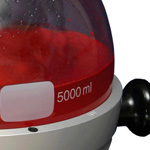 With temperatures outside my home at minus 4 degrees C this morning I was prompted to take a look around the internet and see if there are any simple chemistry tricks for battling the ice.
With temperatures outside my home at minus 4 degrees C this morning I was prompted to take a look around the internet and see if there are any simple chemistry tricks for battling the ice.
There seems to be a lot of conflicting information, some of which is obviously far fetched, but I thought it would be interesting to share some of what I found!
The one we all know is probably the simplest place to start: salt (sodium chloride.)
Salt works by lowering the freezing point of water. When sprinkled on ice, it makes a brine with the film of surface water, which lowers the freezing point and starts melting the ice that the brine is in contact with – to a point.
I found that potassium chloride – more expensive than sodium chloride – works well when mixed 50/50 with it. It will melt ice to temperatures of 12 ˚F or -11 ˚C approximately.
The next thing I found was vinegar (starting to feel a little like we’re going for a traditional English fish and chip supper here with all this salt and vinegar!).
Mixed with 2 parts vinegar to 1 part water and sprayed on an icy windscreen, you can apparantly watch the ice melt away. Like salt, the acetic acid in vinegar lowers the melting point of ice. Unlike salt, it is a volatile compound and if I understand correctly (I’m not a chemist!) it should evaporate after it’s done its job. There are theories that the vinegar leaves the windscreen pock marked but surely the reason that it’s sold in glass bottles is because that’s the best way to contain it?
I found a video on YouTube which certainly shows the windscreen on an icy car clearing but I think I would worry about any effects of the vinegar on my paintwork and trim – are any of our amazing customers able to confirm the truth of this?
If you have any words of wisdom on any of the theories above, or tips you use that you’d like to share then please do let us know! Thank you!




